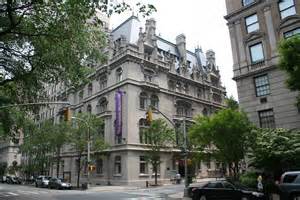Sep 14 2018 - Jan 6 2019
New York City, NY
Chagall, Lissitzky, Malevich: The Russian Avant-Garde in Vitebsk, 1918-1922 traces the fascinating post-revolutionary years when the history of art was shaped in Vitebsk, far from Russia’s main cities. Through some 160 works and documents loaned by museums in Vitebsk and Minsk and major American and European collections, the exhibition presents the artistic output of Marc Chagall, El Lissitzky, and Kazimir Malevich, as well as works by students and teachers of the Vitebsk school, such as Lazar Khidekel, Nikolai Suetin, Il’ia Chashnik, David Yakerson, Vera Ermolaeva, and Yehuda (Yury) Pen, among others.
The Russian Revolution of 1917 had an enormous effect on Marc Chagall. The passage of a law abolishing all discrimination on the basis of religion or nationality gave him, as a Jewish artist, full Russian citizenship for the first time. This inspired a series of monumental masterpieces, such as Double Portrait with Wine Glass (1917), celebrating the happiness of the newly married Chagall and his wife Bella. As the months went by, Chagall felt the need to help young residents of his native city of Vitebsk (in present day Belarus) lacking an artistic education, and to support other Jews from humble backgrounds.
The year 2018 marks the 100th anniversary of Chagall’s appointment as Fine Arts Commissioner for the Vitebsk region, a position that enabled him to carry out his idea of creating a revolutionary art school in his city, open to everyone, free of charge, and with no age restrictions. The People’s Art School, founded by Chagall in 1918, was the perfect embodiment of Bolshevik values. El Lissitzky and Kazimir Malevich, leading exponents of the Russian avant-garde, were two of the artists invited to teach at the school. Lissitzky took charge of the printing, graphic design, and architecture workshops, while Malevich, leader of the abstract movement and founder of Suprematism, was a charismatic theorist who galvanized the young students. A period of feverish artistic activity followed, turning the school into a revolutionary laboratory. Each of these three major figures sought, in his own distinctive fashion, to develop a “Leftist Art” in tune with the revolutionary emphasis on collectivism, education, and innovation.
Credit: Exhibition overview from museum website.
Whether or not you go, the groundbreaking exhibition catalog, Chagall, El Lissitzky, Malevitch: The Russian Avant-garde in Vitebsk (1918-1922), explores the Russian avant-garde during the early post-revolutionary years of 1918-1922 and brings together the works of three of its most influential artists. This volume features 250 works and documentary items from Vitebsk, bringing to life a little-known chapter in the history of art. Every aspect of this brief but decisive period is examined here, from Chagall's notion of proletariat art to the birth of the UNOVIS group and its trailblazing expositions. Correspondence among Chagall, Malevitch, and Lissitzky are featured alongside important works from all three artists as well as art from their colleagues and students. The result is a multifaceted portrait of a unique collaboration that forged a new path for artistic expression which extended far beyond the boundaries of Vitebsk.
Select Chagall, El Lissitzky, Malevitch: The Russian Avant-garde in Vitebsk (1918-1922) to learn more, or to place this book in your Amazon shopping cart. Your Amazon purchase through this link generates a small commission that will help to fund the ArtGeek.art search engine.
Exhibition Venues & Dates
Sep 14 2018 - Jan 6 2019
New York City, NY

